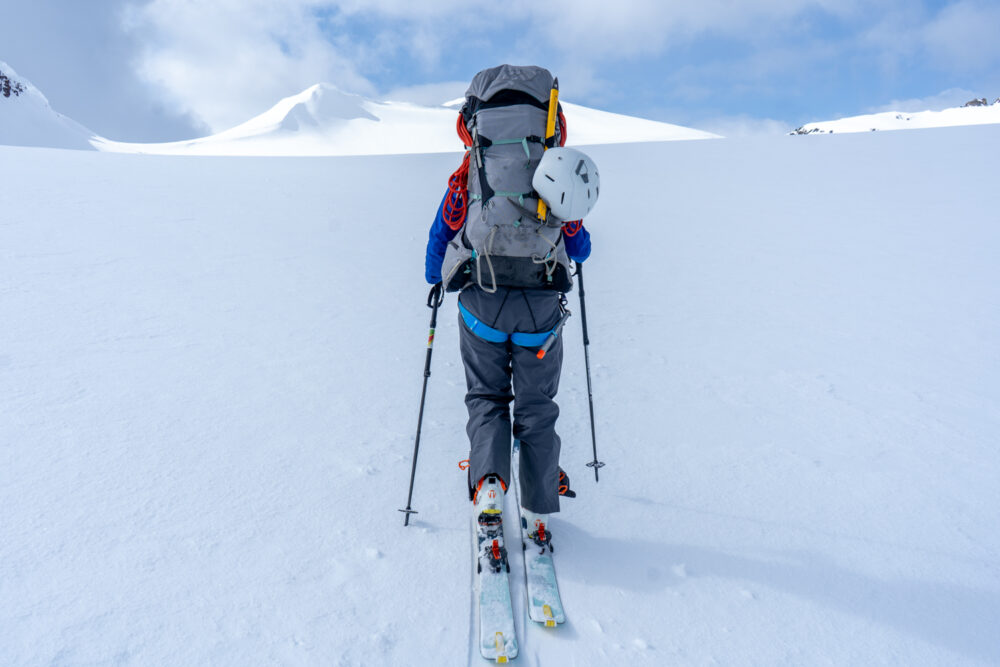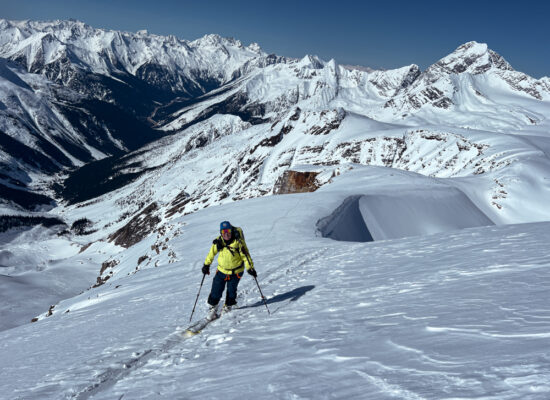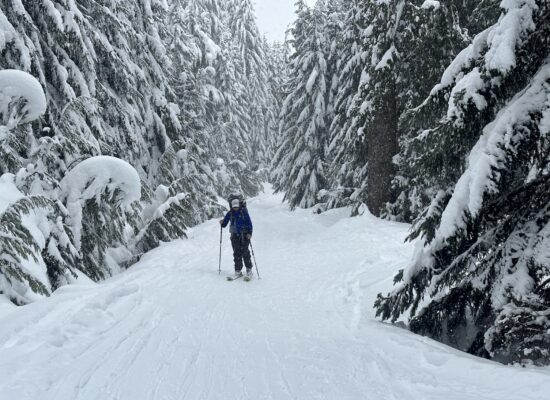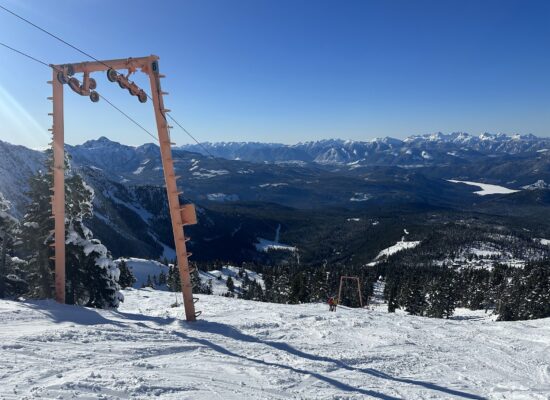The Spearhead Traverse is a challenging ski mountaineering route that takes you from Blackcomb to Whistler, the long way around. It is a 35km traverse with approximately 1700m elevation gain. It connects 11 glaciers and 17 peaks.
You see a lot of stories of people doing the Spearhead in one day. Those people are outstanding athletes. But how would you, an average person and an okay skier, fair? And what if they went out in some not so great weather?
Well, this is that tale.
Lee and I are two middle-aged people who got a bit out of shape over the past few years due to the stress of a global pandemic and my subsequent two years with long covid.
We spent this winter lifting weights, running, and skiing as much as possible. We practiced crevasse rescue. I took two days of ski lessons. By the time we started on the traverse, I had over 30 days of skiing for the season. I was a strong black diamond skier on all terrain in the resort and comfortable with most terrain in the backcountry. Lee is a much stronger skier and can ski pretty much anything. We have years of experience with mountaineering and glacier travel.
Here is how our four-day trip on the Spearhead Traverse went.
Day 1
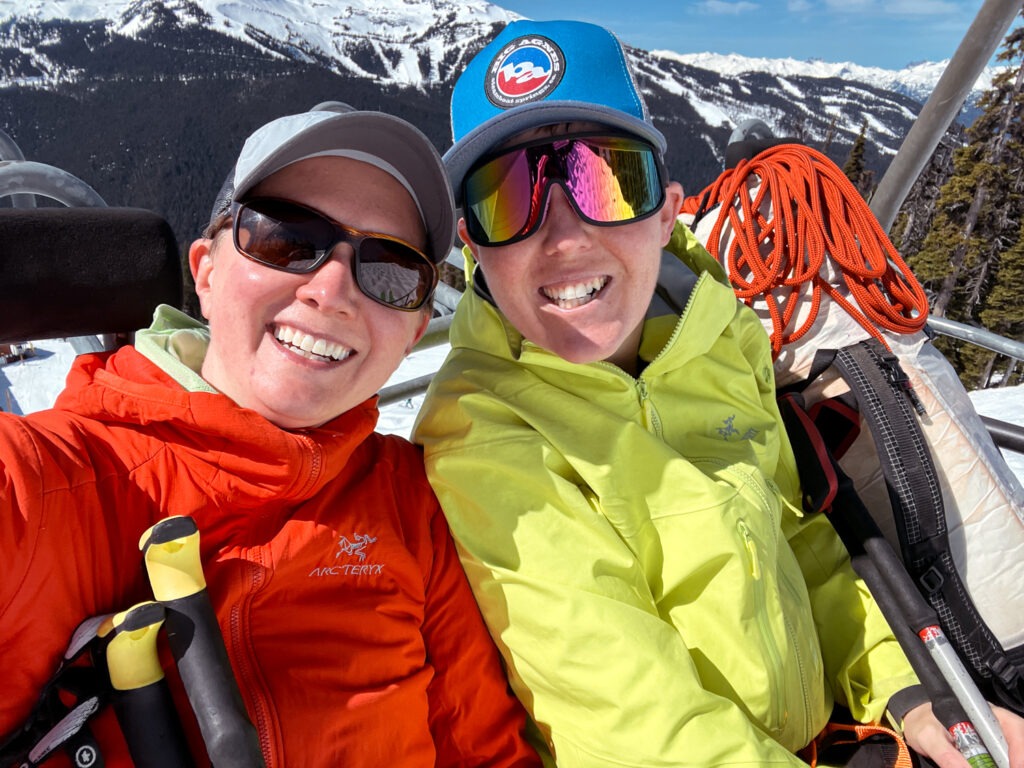
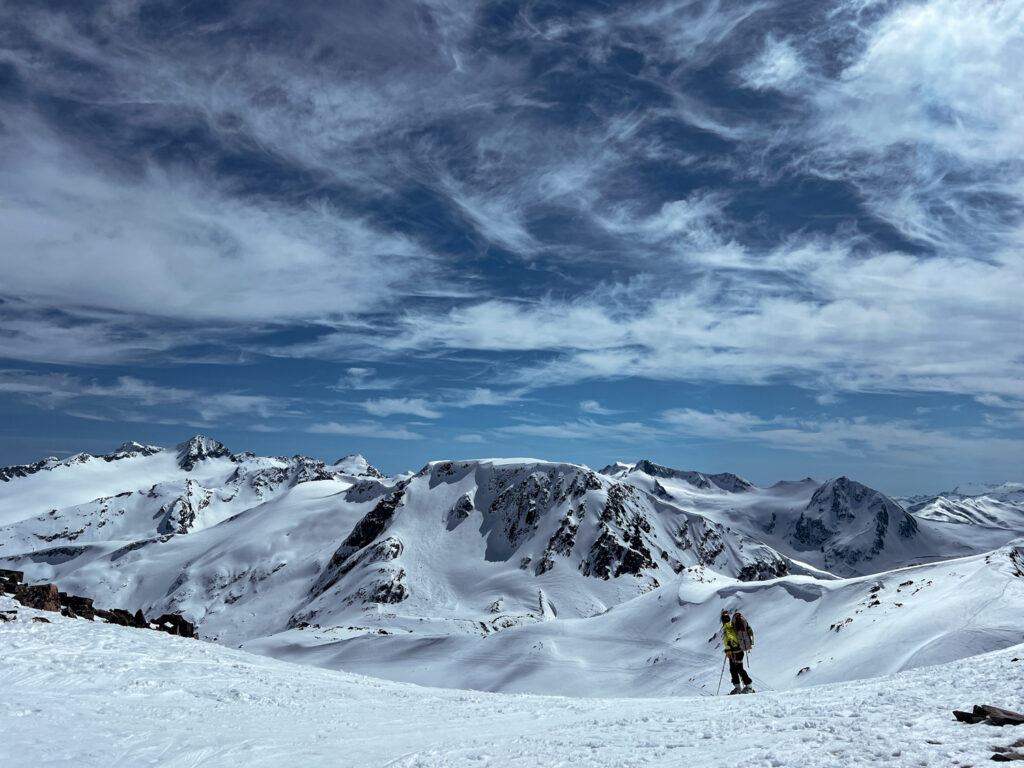
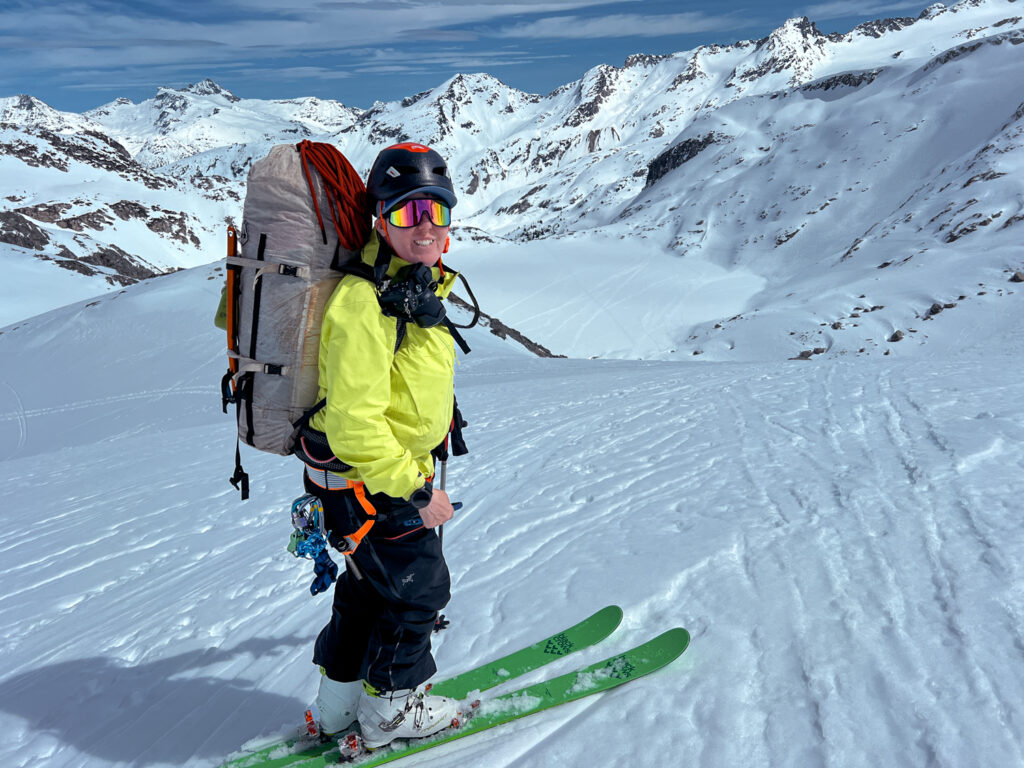
We arrived at Blackcomb and parked in the designated lot for Garibaldi Park users. We placed our backcountry reservations on the dash and paid for parking. We bought our backcountry access tickets at Blackcomb guest services. We took the designated gondola, chairlift and T-bar up to the start of the backcountry gates.
The sun was out, the temps were pleasant. The snow was soft and relatively stable. We walked uphill with short bursts of downhill skiing. Packs were heavy.
We were following the four-day plan in Matt Gunn’s guidebook, which had us camping on the Torey Glacier. We picked a high point with stellar views right on schedule after a relatively easy day.
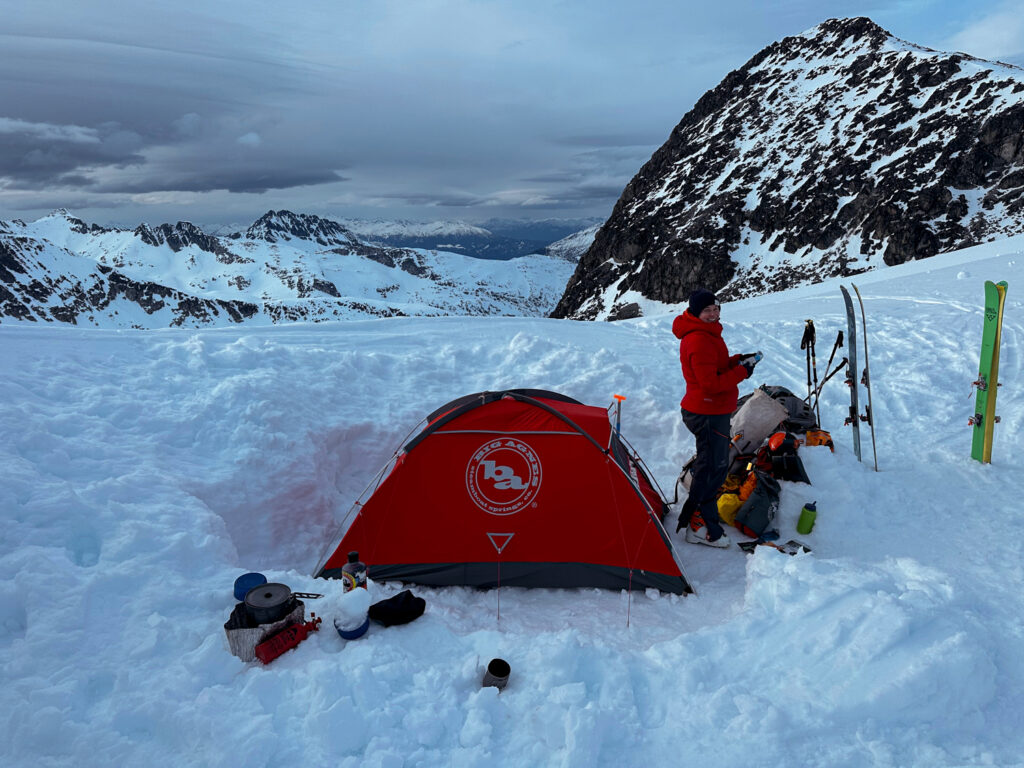
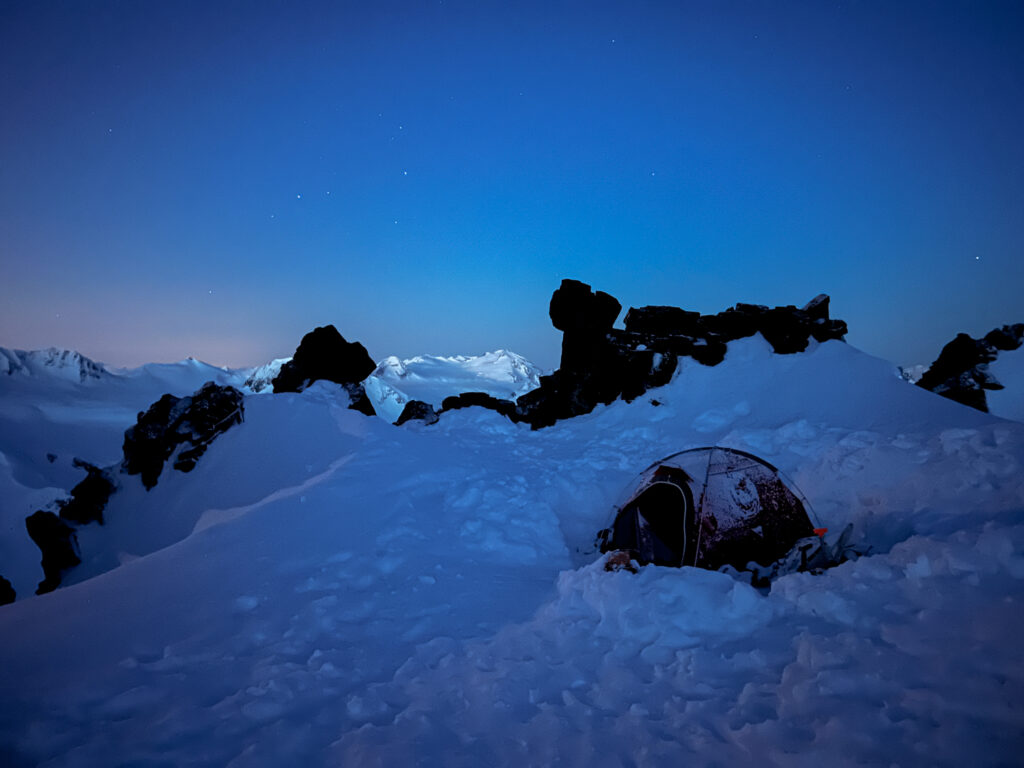
Day 2 would bring something much different.
Day 2
This day started beautifully. We didn’t have far to go, so we had a late start in the day.
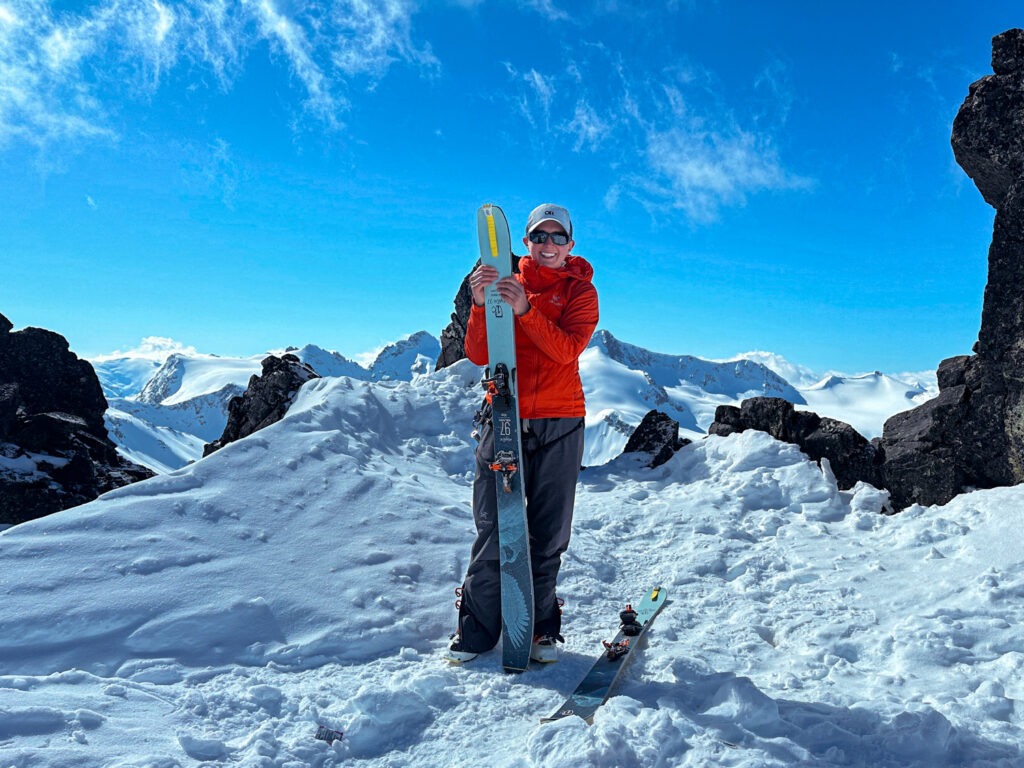
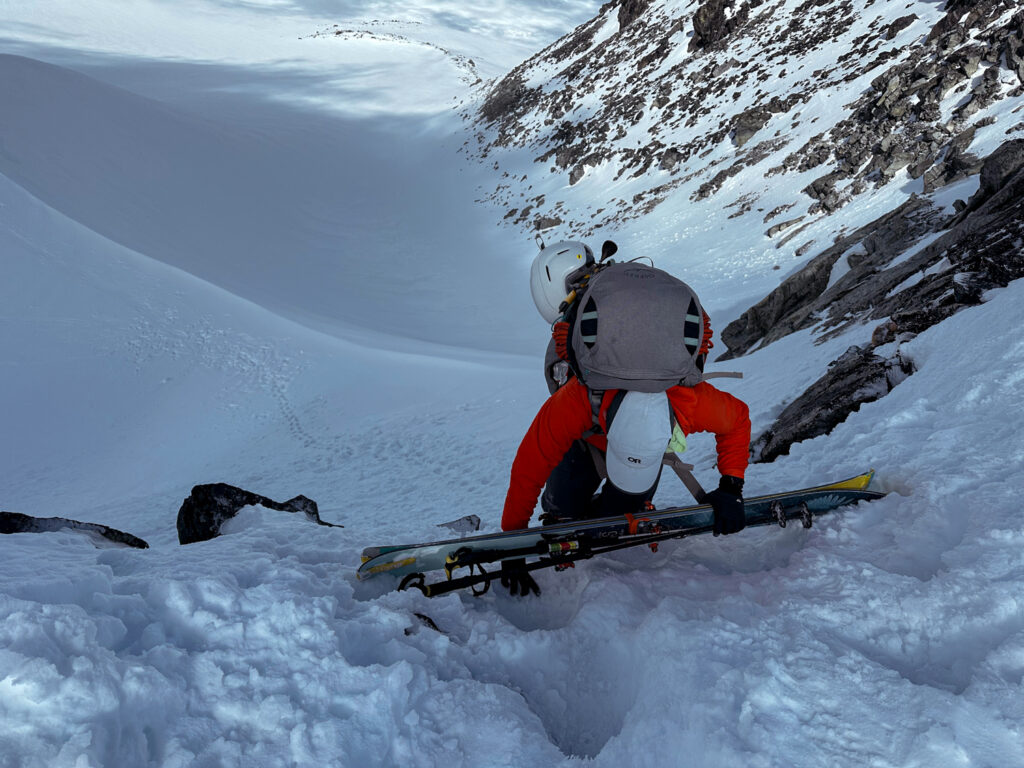
Then the clouds rolled in. We couldn’t see more than a few feet in front of us.
Lee and I have navigated in whiteouts in the mountains before. We’ve also skied in resorts in whiteouts. But I didn’t know how hard combining the two would be for me.
I felt so disoriented. I fell over while standing still at one point. My brain played tricks on me, making stationary objects appear to be moving up and down or side to side. I often stopped to tap my ski pole in front of me to tell if the ground was going up or down. I would see vague shapes suggesting a drop off or a hill, and couldn’t tell if they were right next to me or in the distance.
The following are photos towards the end of the day as the whiteout started to clear. We have no photos of the whiteout, as it was … just white!
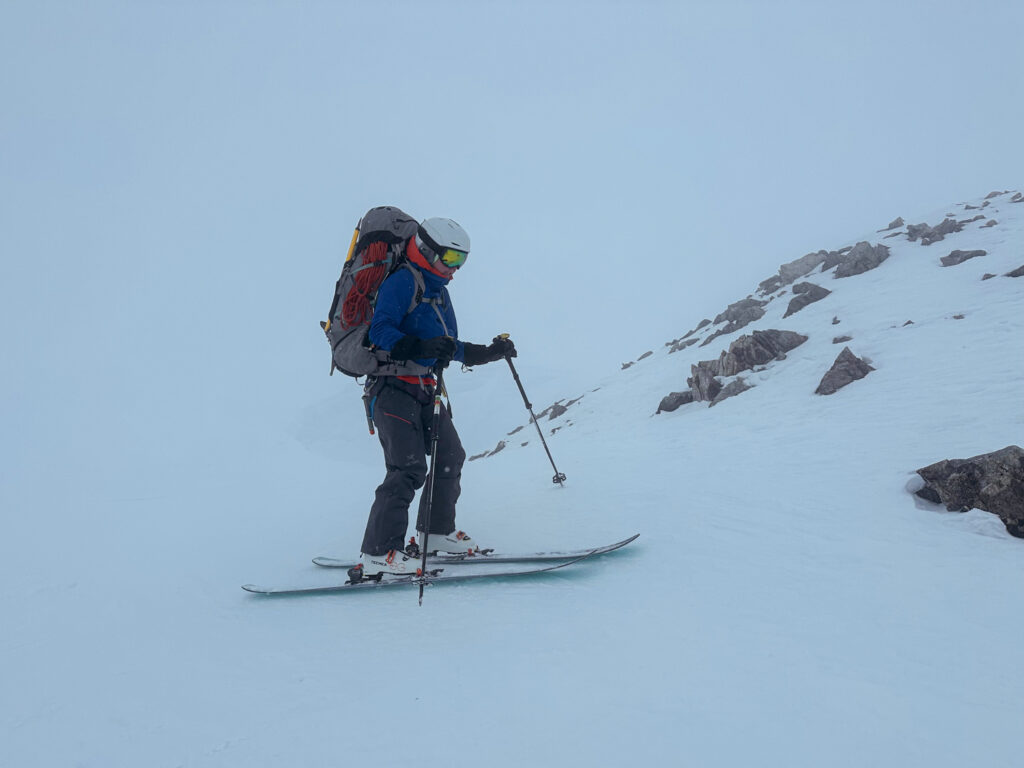
To top it off, the snow was completely frozen. We had to use ski crampons to climb. And skiing down on ice freaks me out, especially with a huge pack speeding me up.
So, needless to say, we travelled very slowly. I was also so nervous that I forgot to eat or drink regularly.
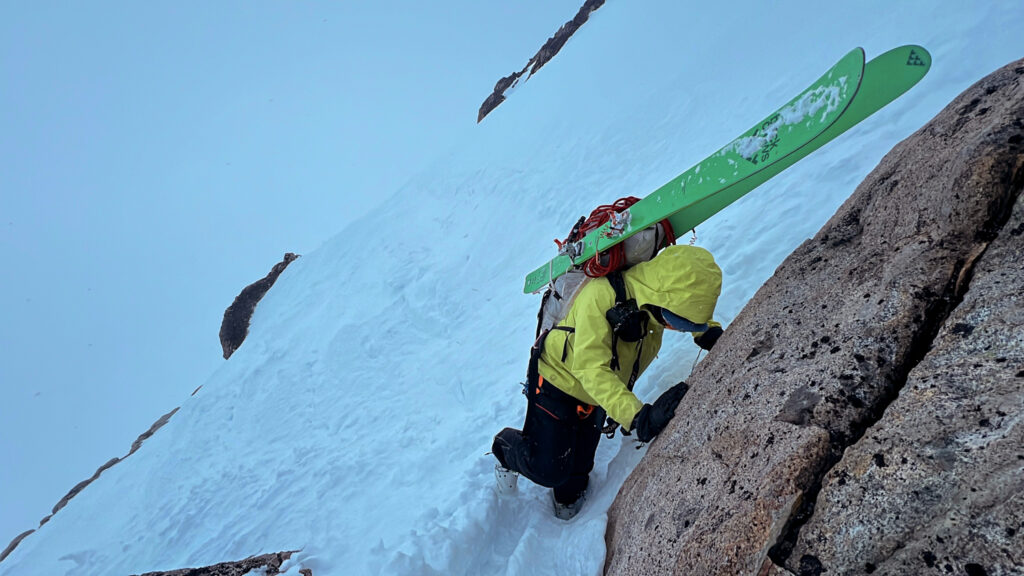
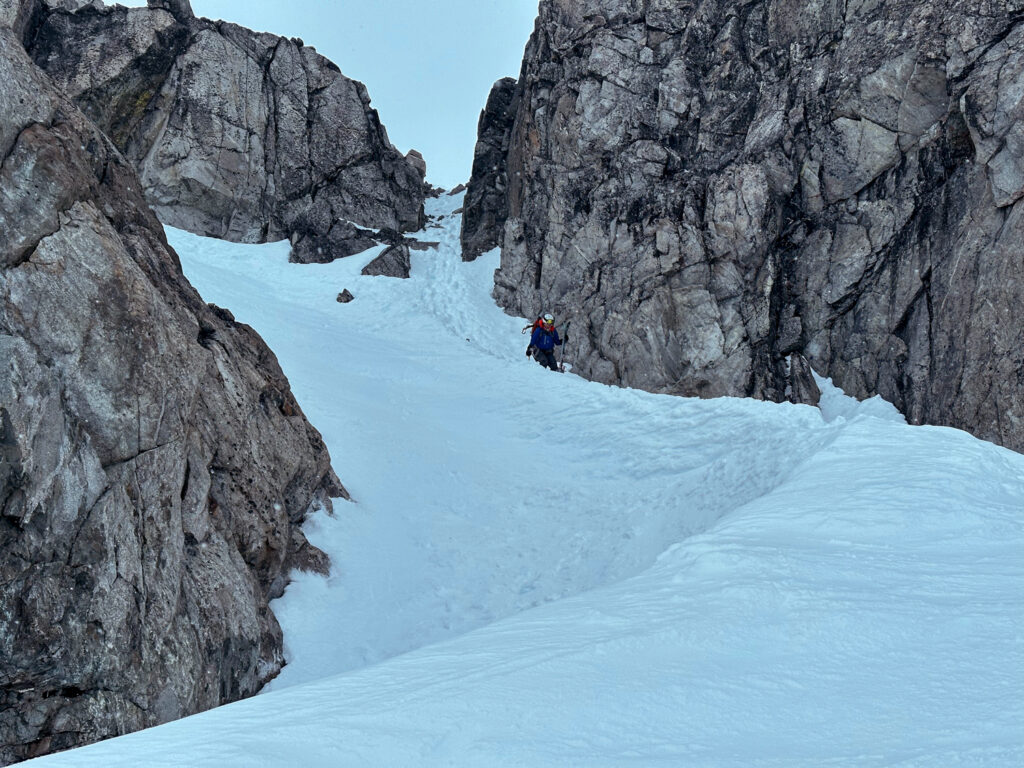
By the time we were done for the day, I was shaking uncontrollably with cold. The strong wind was blowing snow into my eyes and stripping away any positivity I had remaining. Lee put up the tent by herself and fed me gummy bears until dinner was ready.
That night, both of us woke up unable to catch our breath and hyperventilating. We still don’t know why, but we wonder if it was the elevation catching up with us. 2600m is not that high, but we live at sea level. We also had problems breathing the night before.
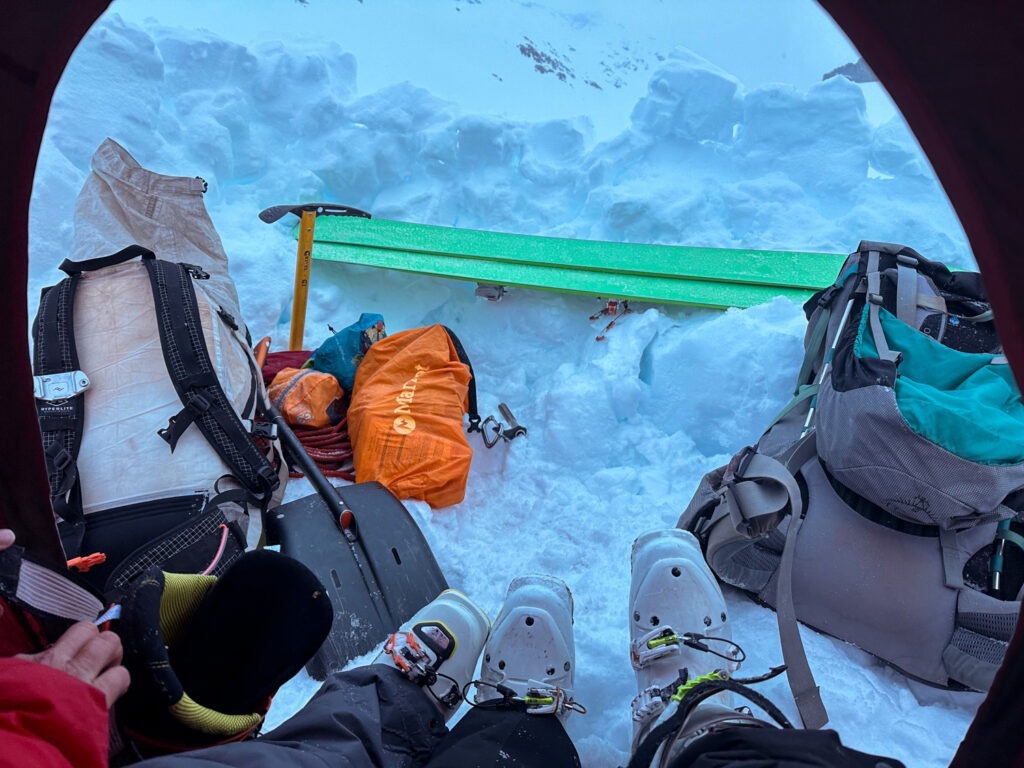
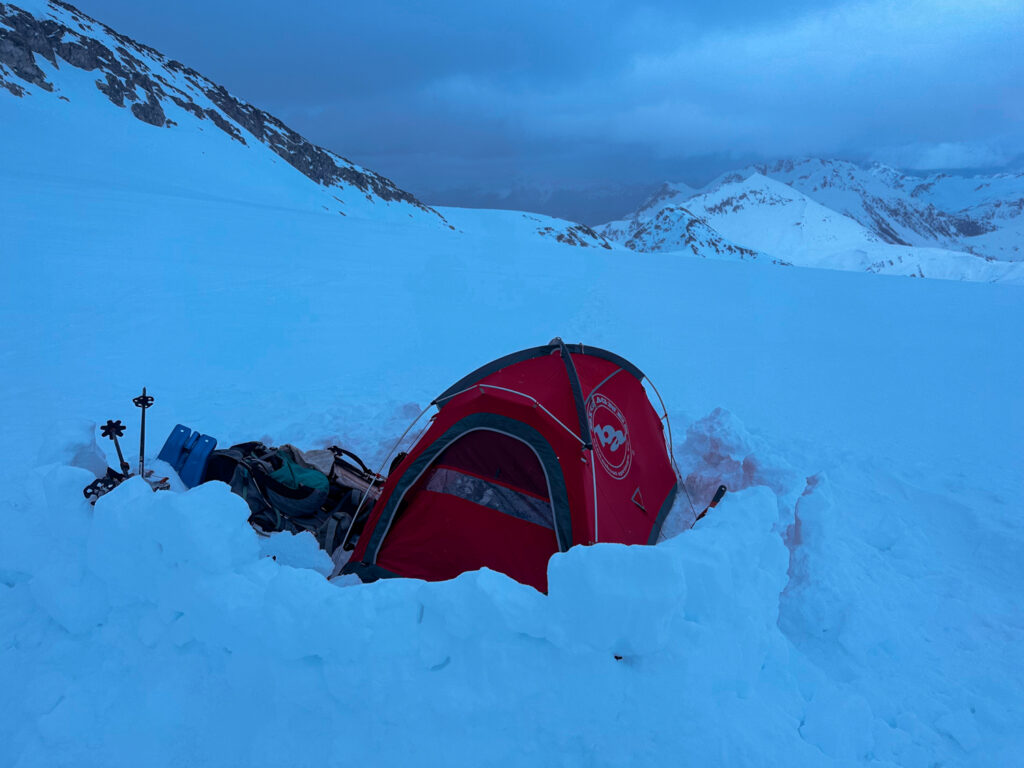
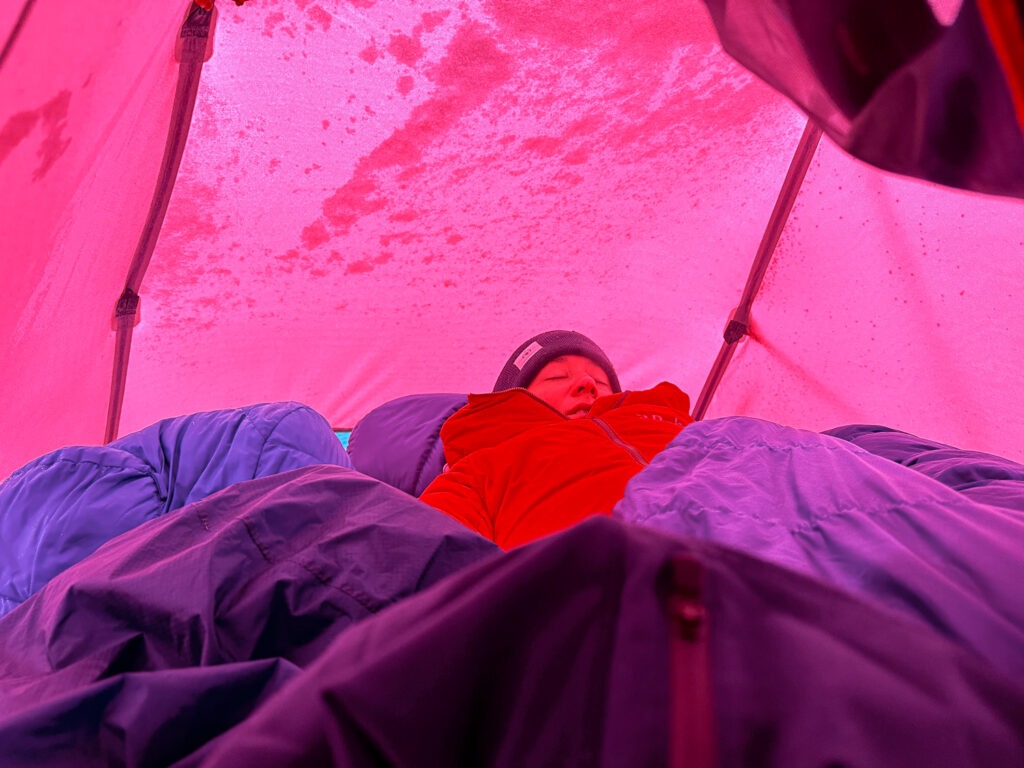
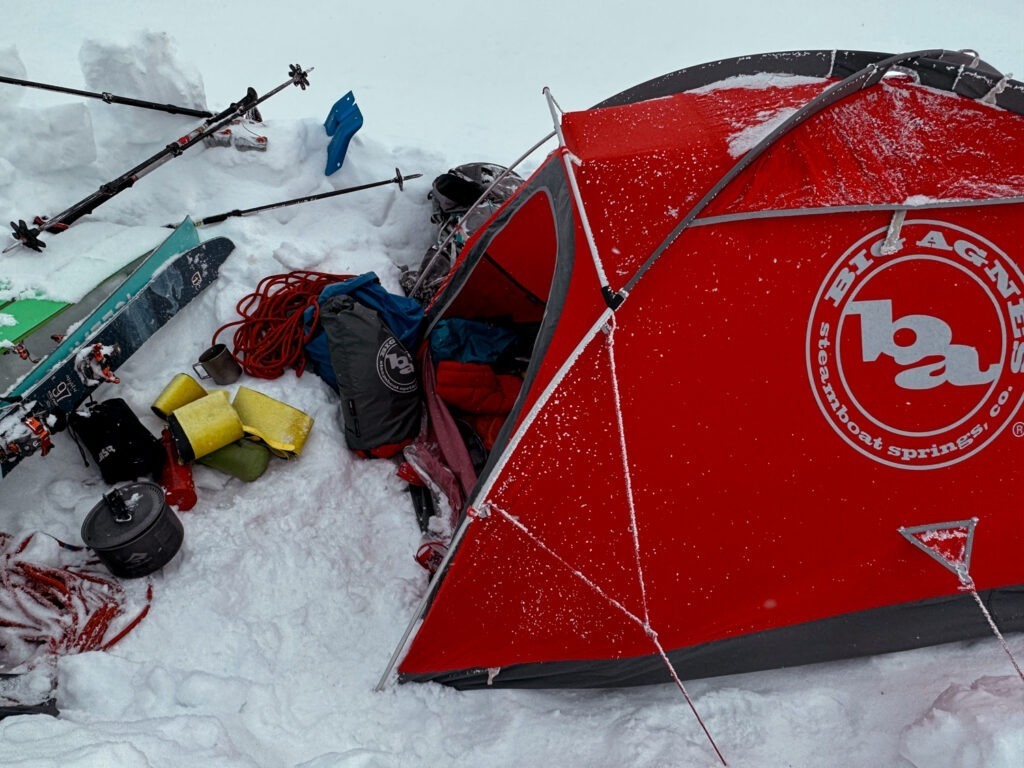
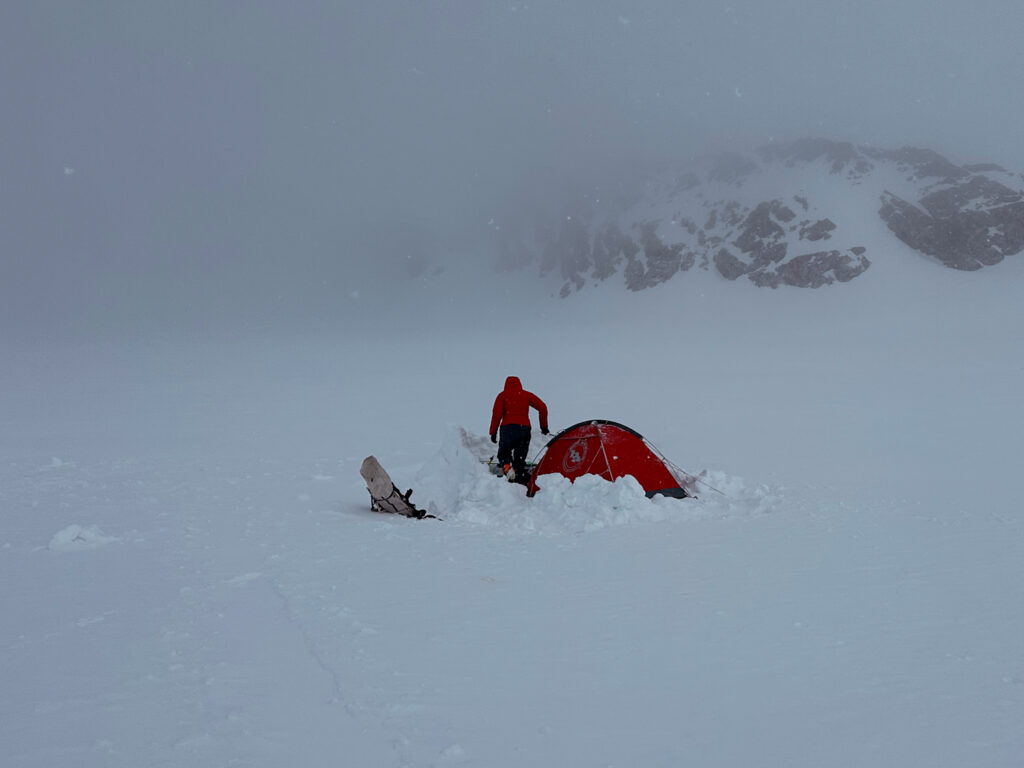
At this point, I did NOT want to be there anymore. But we were in the middle of the traverse. So onward we went.
Day 3
We had the longest planned day ahead of us. But we had reservations at the Kees and Claire Hut, so we felt inspired to get it done.
We could see where we were going once again, so that was promising. I also committed to eating and drinking water regularly.
But with -6C as high, the ground still felt more like ice than snow.
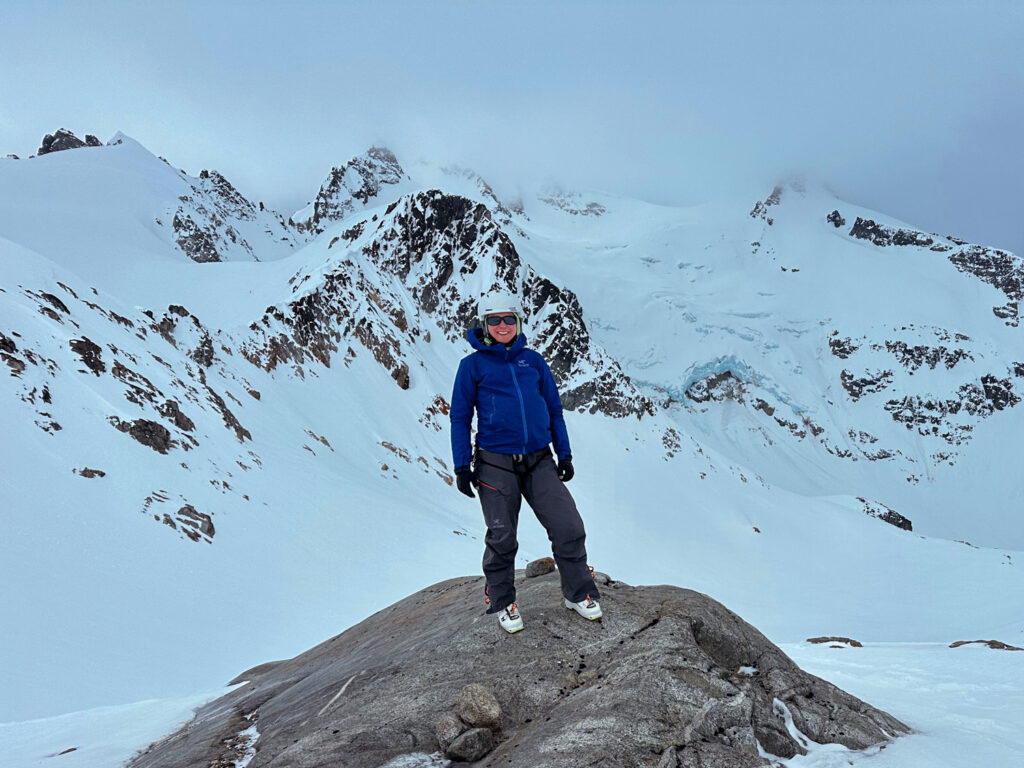
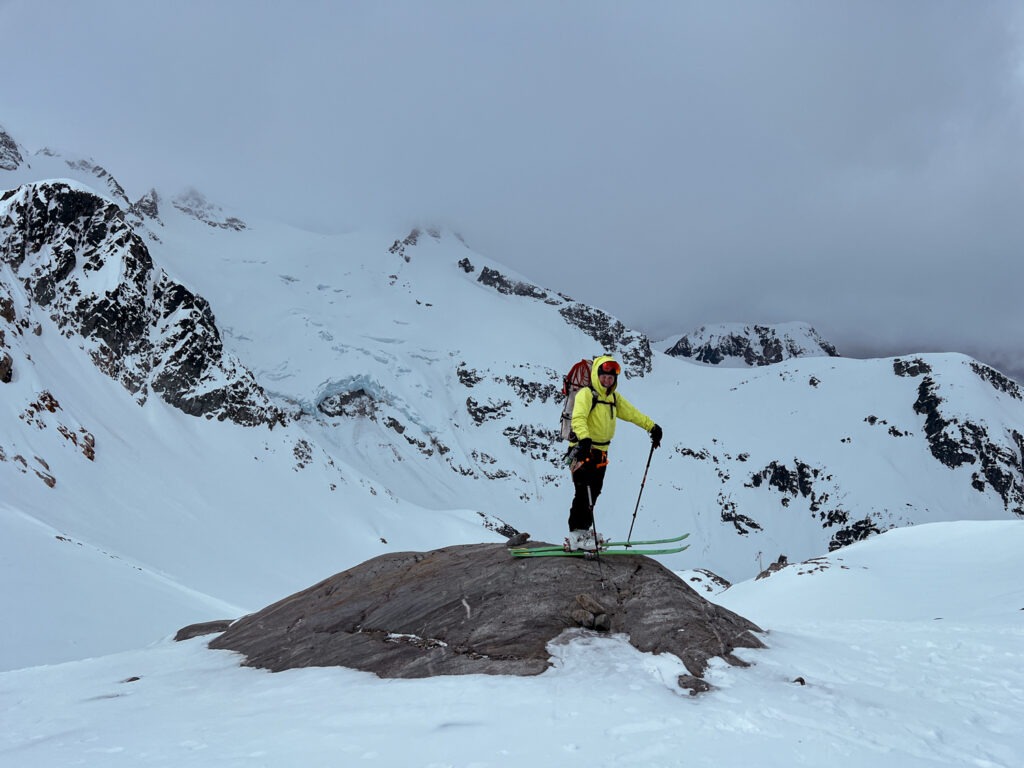
We had many navigational choices to make throughout the day. The most direct routes were often traverses high up on the sides of mountains. This felt fairly risky given the icy conditions.
Although the whiteout had lifted, the light was still very flat, making it hard to tell if the terrain was very steep or very gentle. It also made it hard to tell how far away something was, like the top of a hill or a valley floor.
Given this, we often skied or boot packed down and then climbed up a more conservative path. This ended up doubling our planned distance and elevation.
I dug deep into my endurance athlete brain and just made it work as best as I could. But we were going for ten hours straight, and I was tired.
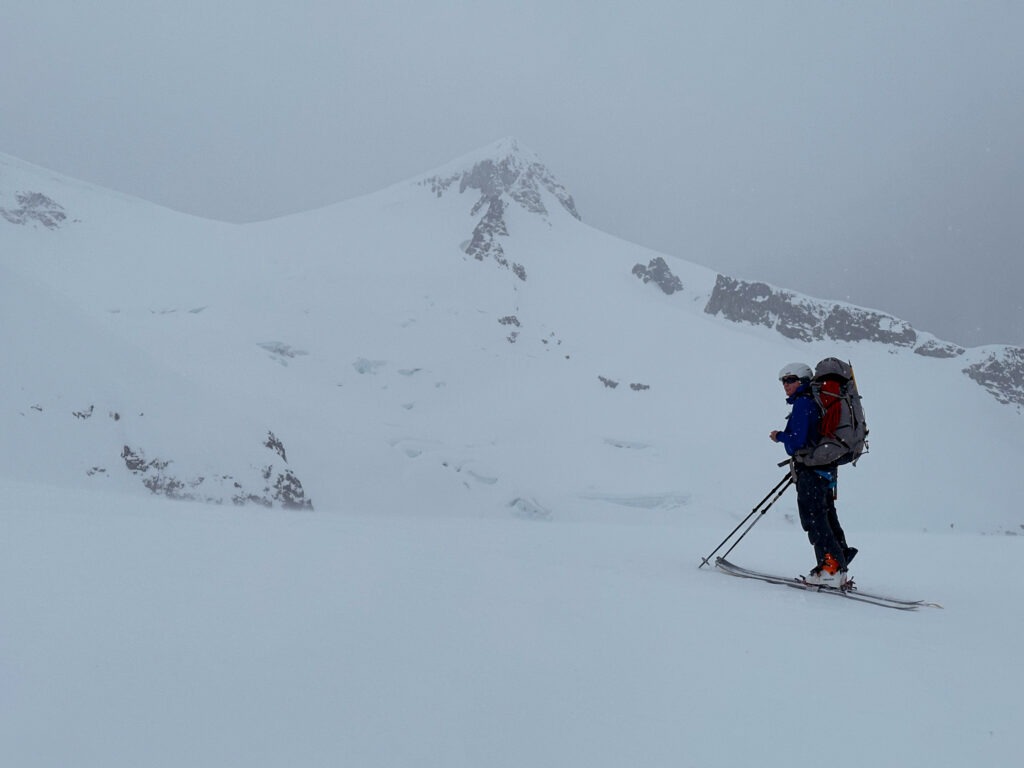
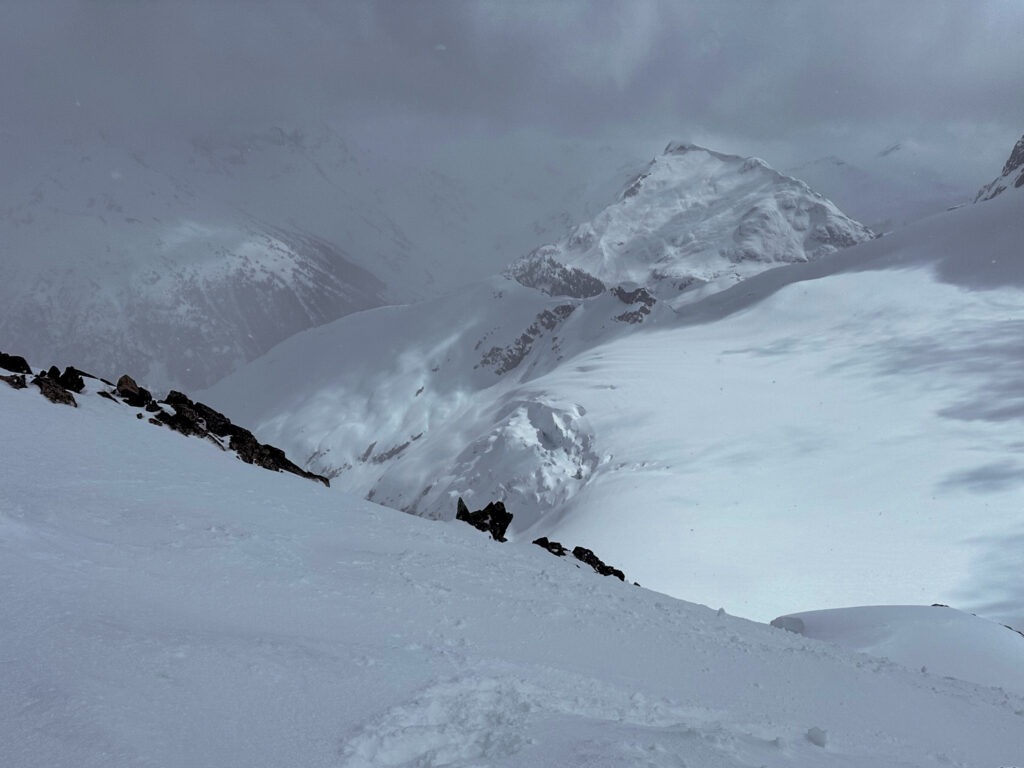
We skied down the Overlord Glacier around sunset.
Lee wanted to keep going to the hut, but I gently suggested it wasn’t happening, even though it was only 2km away.
We had never been here before and didn’t know what the terrain ahead was like. Lee was exhausted after two days of being “on” and helping me through the terrain. She had also just had a head-over-heels fall, and her clothes were wet. Not great in freezing temps.
If we ran into trouble, no one would probably come to help until the morning at the earliest. And it was going to be below -10C that night. Not nice conditions for an emergency bivvy!
So camping night three it was!!
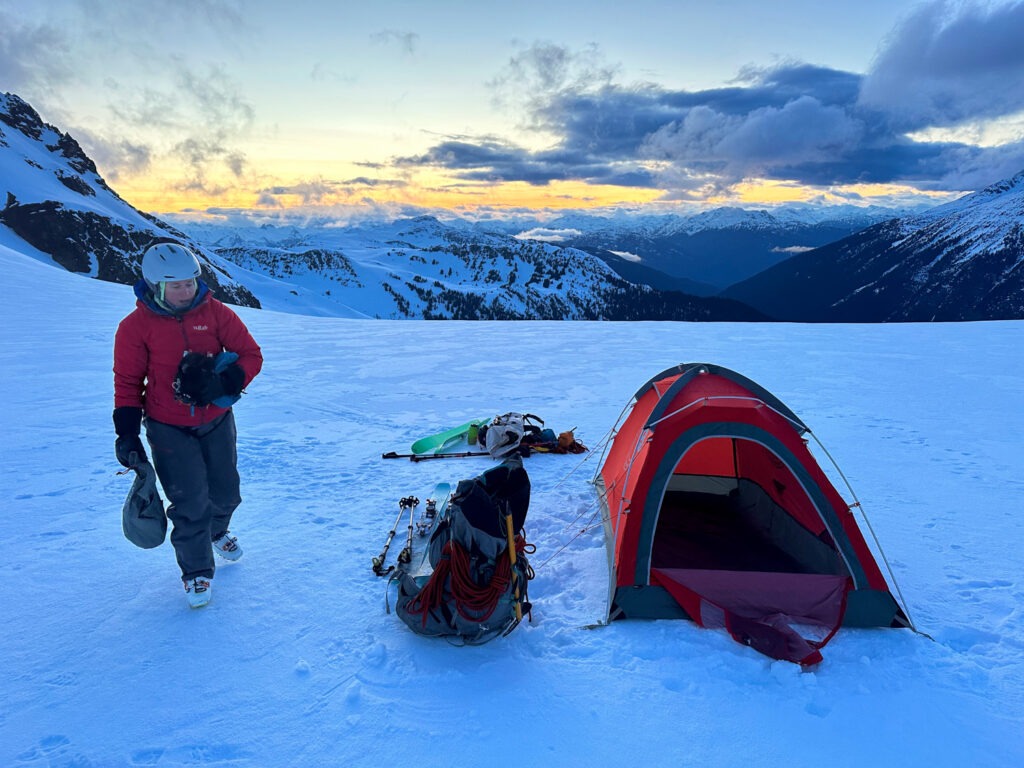
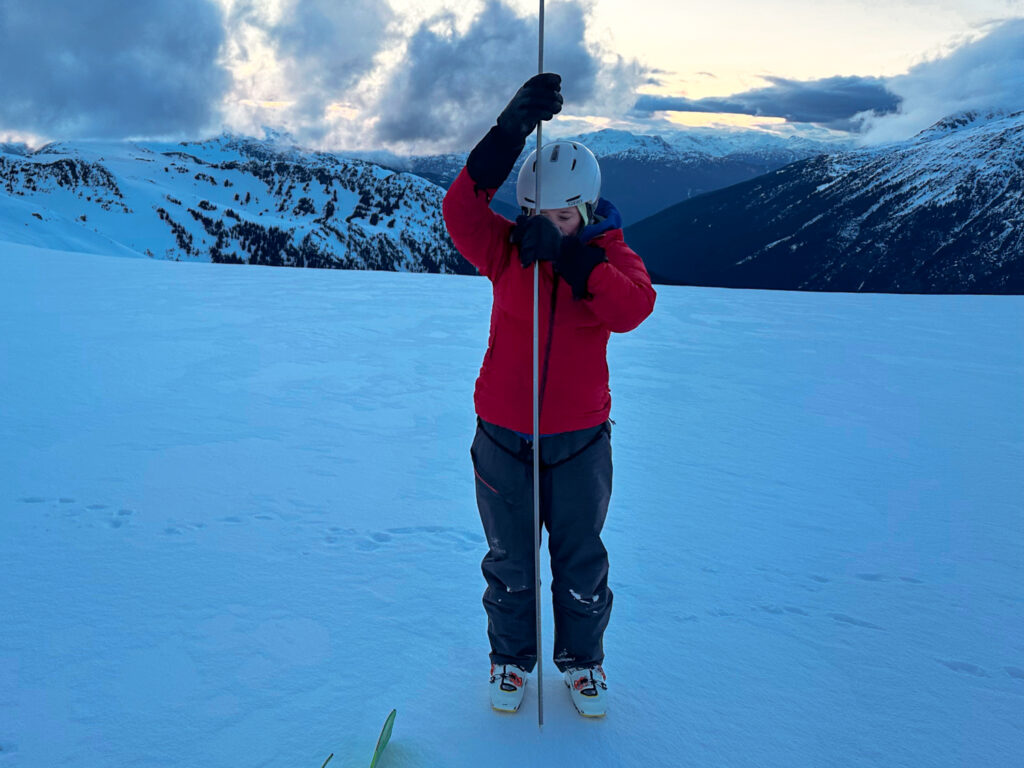
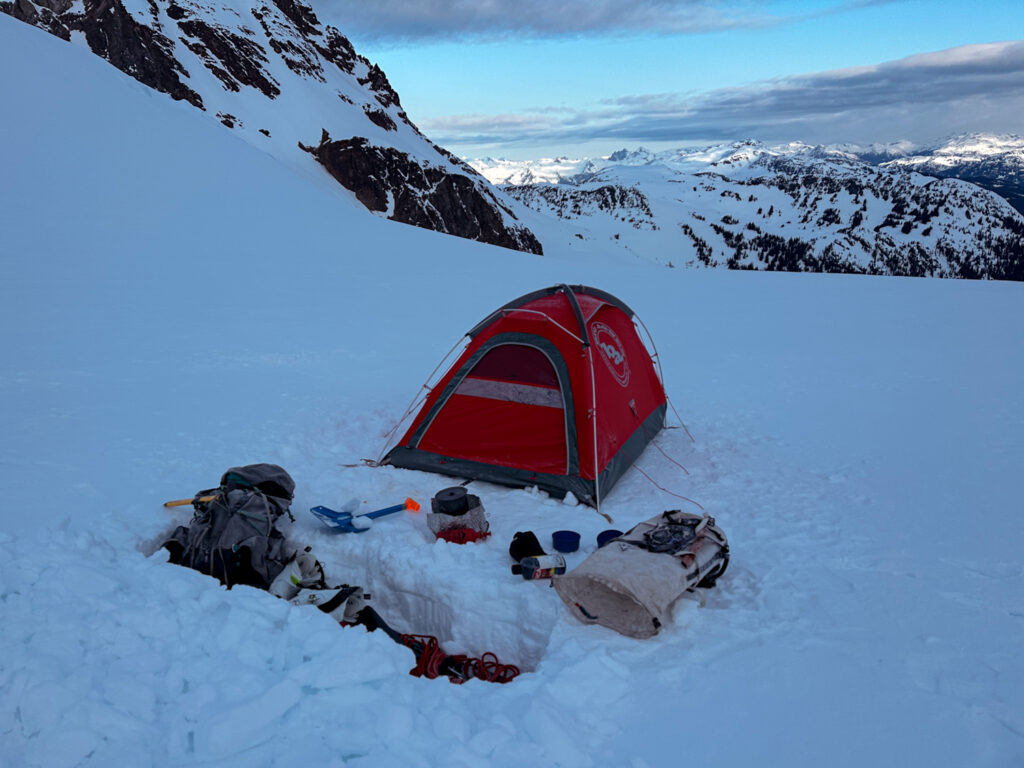
We hadn’t planned on needing fuel for a third night and fourth day, so we weren’t sure if we could have a warm dinner. The priority was melting water, and we’d go from there.
Luckily, we had enough fuel not just for water but warm dinner and breakfast too! (Always bring extras…)
I think this kind of thing can make or break a relationship. But honestly, it made us feel closer and more connected.
Day 4
Most people enjoy this last little bit of the traverse as the technical parts are over and you’re just cruising through the slack country, and then eventually Whistler resort itself.
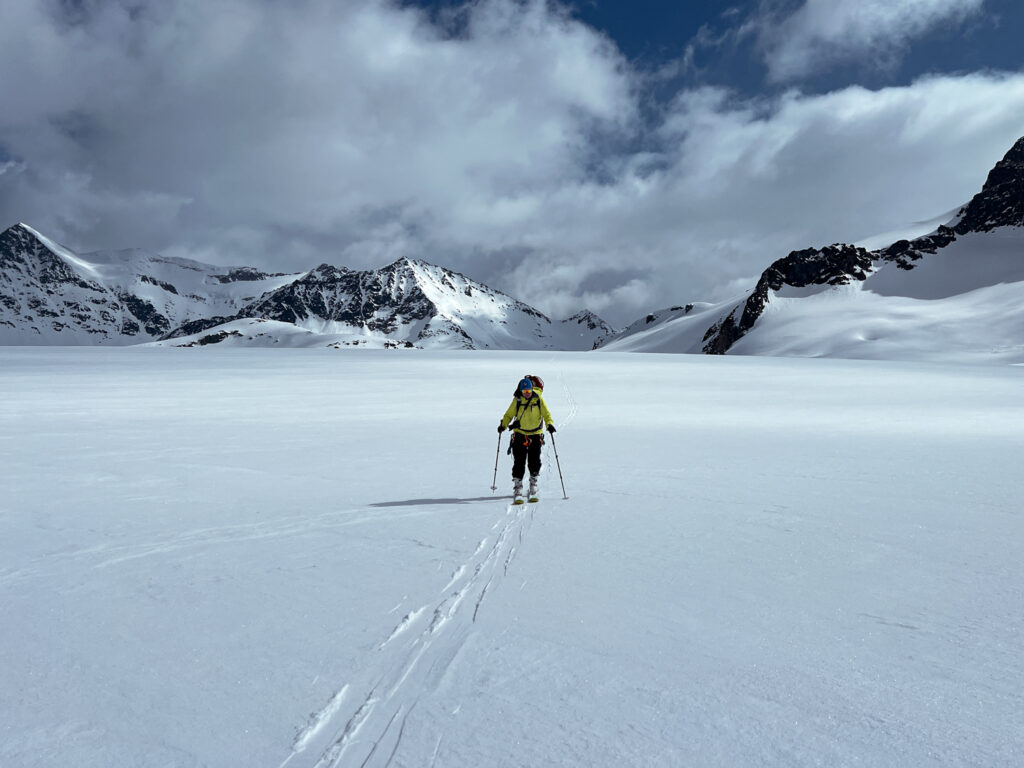
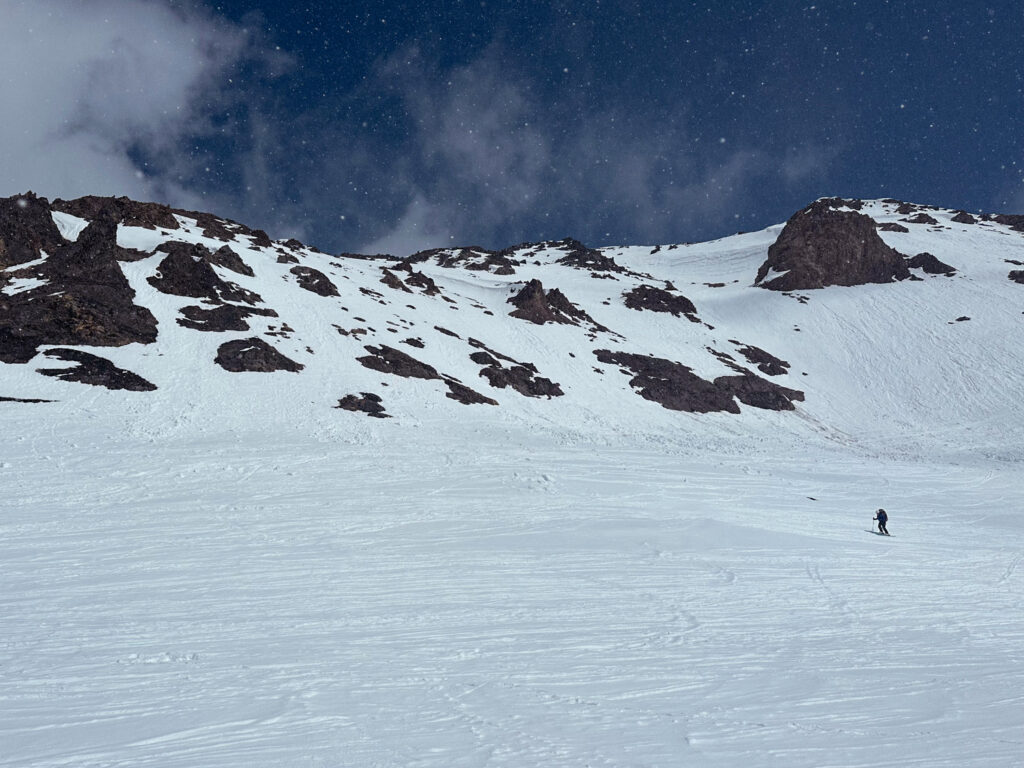
But my legs were so tired, they refused to ski properly. It was pretty painful for Lee to watch me slowly zig and zag across the slopes like someone on their first day of ski lessons. She was still doing fine.
I had also run out of appealing snacks, so I really wasn’t at my best. I was licking cookie and cracker dust out of plastic baggies.
But you know what, we did it. We finished.
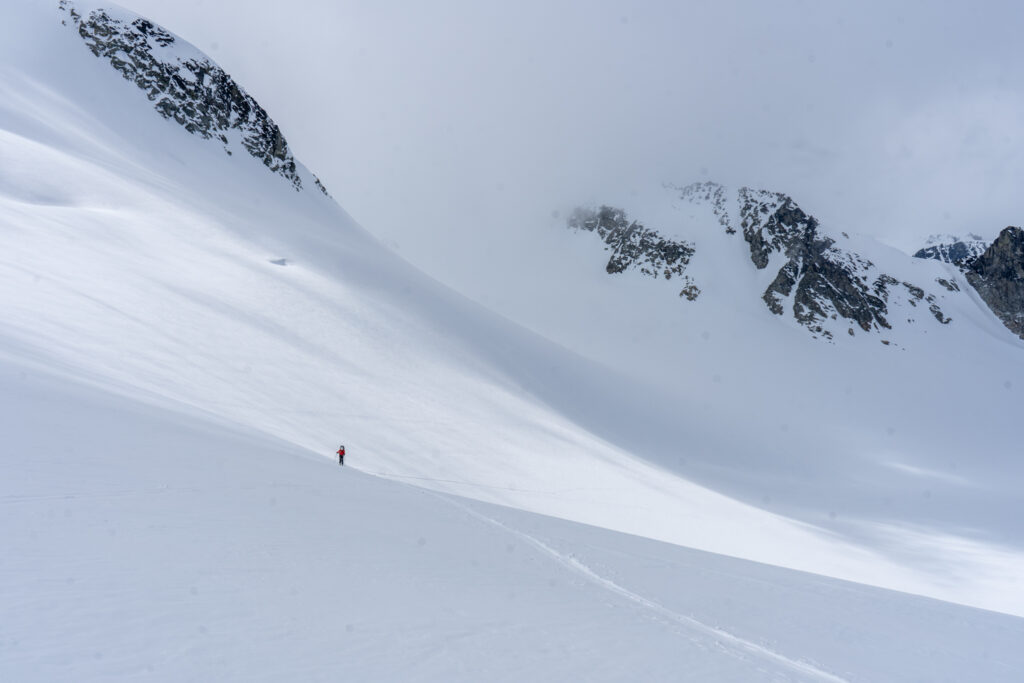
Lessons learned for the next ski traverse
- Keep skiing a lot.
- Keep lifting weights and running.
- Move to Squamish so Whistler is our local ski hill
- Don’t spend our “extra” time chilling at the start of an unknown traverse, even if the weather is nice.
- Bring more snacks. Eat more snacks. Even when you’re like, “Wow that’s a ridiculous amount of food.” More snacks.
Discover more from We Belong Outside
Subscribe to get the latest posts sent to your email.

